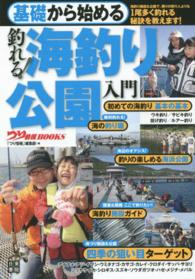Description
Table of Contents
Introduction.- Panel 1 Yuegang Outbound:The Archaeology of Yuegang as the Key Transit Terminal for Manila Galleon.- 1 Bound for America:A Historical and Archaeological Investigation in Yuegang (crescent) Seaport as the Main Origin of Galleon Cargo.- 2 The Cultural Change of Kilns and Content of Export Ceramics on the Perspective of Development of Zhangzhou Seaports during the Ming and Qing Dynasties.- 3 The Investigation and Preliminary Analysis of Nan'ao No.I Shipwreck in Guangdong.- 4 A Historical Review on the Social-Cultural Impact of Yuegang-Manila Navigation on the Ancient Chinese Civilization.- Panel 2, Manila Entrepotting: Discovery of Galleon Trade Heritage at Manila, Macao, Keelung and Nagasaki.- 5 An Analysis on the Chinese Porcelain in the Manila Galleon Trades.- 6 Fujian and Hizen Ware: A 17th Century Evidence of the Manila Galleon Trade Found from Selected Archaeological Sites in the Philippines.- 7 Archaeological Researches on the Manila Galleon Wrecks in the Philippines.- 8 The Kraak Porcelains Discovered from Taiwan and Macao, and Their Relationship with the Manila Galleon Trade.- 9 Ceramics from Nagasaki: A Link to Manila Galleon Trade.- 10 Searching for the San Francisco (1609), a Manila Galleon Sunk off the Japanese Coast.- Panel 3, Bound for Acapulco: The Archaeology of the Pacific and America as the Galleon navigation record.- 11 The Development of Humåtak Village: the Life-Line of the Manila-Acapulco Galleon Trade.- 12 Clues to Internationalism in the Manila Galleon Wreck of the Late 1570s in Baja California.- 13 Archaeological Distribution of Chinese Porcelain in Mexico.- 14 The Chinese Porcelain from the Port of San Blas, Mexico.- 15 A Study of the Chinese Influence on Mexican Ceramics.








